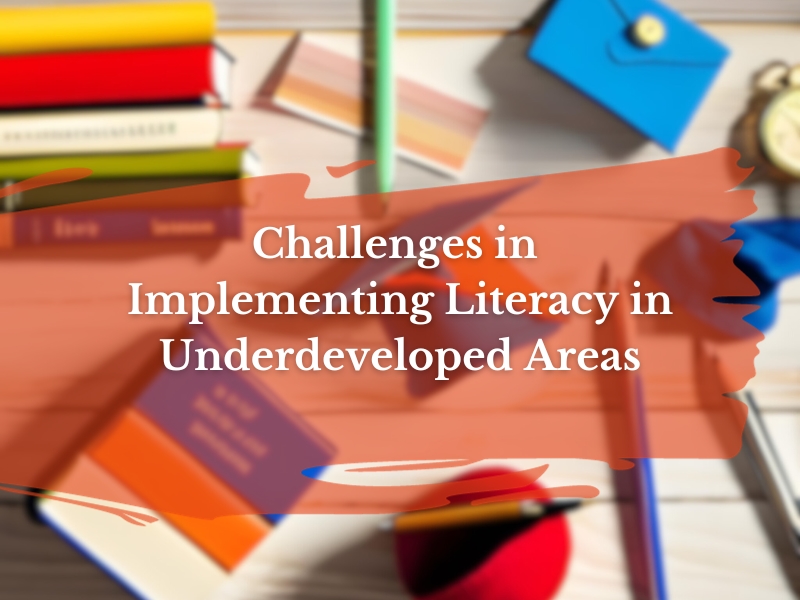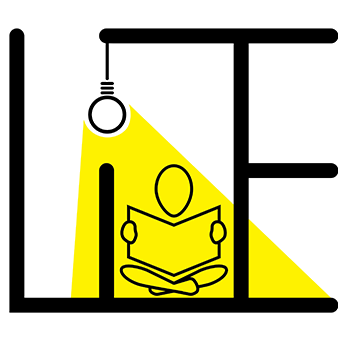Literacy, the ability to read and write, is not merely a skill; it’s a catalyst for personal growth and societal progress. It unlocks doors to knowledge, economic opportunities, and empowerment, ultimately contributing to the well-being of individuals and communities. Yet, in the context of underdeveloped regions, where the foundations of basic infrastructure are fragile or non-existent, the task of implementing effective literacy programs becomes a formidable challenge. In these areas, where daily life is often a struggle for survival, the journey towards literacy is fraught with practical difficulties. This article delves into the intricate web of challenges that hinder the promotion of literacy in underdeveloped regions, providing insights into the complexities of this vital undertaking.
Inadequate Infrastructure
Inadequate infrastructure is a substantial hurdle in the quest to promote literacy in underdeveloped areas. These regions often lack proper roads, transportation systems, and reliable communication networks, rendering them inaccessible to literacy instructors and educational resources. The absence of functional transportation makes it arduous for instructors to reach remote villages and communities, where literacy rates tend to be the lowest. Moreover, the logistical challenges extend to the delivery of learning materials and resources, which may not reach their intended destinations in a timely manner. This infrastructure deficiency significantly restricts access to education, perpetuating the cycle of illiteracy in these marginalized areas. Addressing this challenge necessitates investments in infrastructure development to bridge the gap and ensure that literacy efforts can effectively reach every corner of underdeveloped regions.
Limited Access to Schools and Resources
Limited access to schools and educational resources poses a substantial obstacle to literacy promotion in underdeveloped areas. In many of these regions, there is a scarcity of schools, and those that do exist are often overcrowded and ill-equipped. This limits the opportunities for individuals, especially children, to receive a quality education. Additionally, the shortage of learning materials, such as textbooks and teaching aids, further compounds the problem. Without access to these basic tools, learners are deprived of the essential resources needed to acquire and improve literacy skills. This lack of infrastructure perpetuates the cycle of illiteracy, as individuals are unable to access the educational opportunities necessary for personal and community development. To address this challenge, it is imperative to invest in the construction of more schools, equip them adequately, and ensure the availability of learning materials to create an environment conducive to literacy development.
Teacher Shortages
Teacher shortages are a significant impediment to promoting literacy in underdeveloped areas. These regions frequently face a dearth of qualified educators, creating a situation where there are too few teachers for the number of students in need. This shortage leads to overcrowded classrooms and a diminished student-teacher ratio, which hampers the effectiveness of teaching. Additionally, the educators who are available may not always possess the necessary training or qualifications to provide quality education. This lack of skilled instructors can result in subpar learning experiences for students, hindering their literacy development. Addressing this challenge requires comprehensive strategies, including training and incentivizing teachers to work in remote areas, providing professional development opportunities, and investing in teacher recruitment and retention programs. Without an adequate number of qualified teachers, efforts to improve literacy rates in underdeveloped areas will remain an uphill battle, limiting the potential for social and economic progress.
Language Barriers
Language barriers pose a substantial challenge to literacy initiatives in underdeveloped areas. These regions often exhibit linguistic diversity, with communities speaking various languages or dialects. When educational materials and instruction are primarily offered in a language that differs from the one spoken by the local population, it creates a significant hurdle for learners. Language is not only a medium of instruction but also a tool for comprehension and expression. When learners are not proficient in the language used in the curriculum, it can lead to confusion, frustration, and limited learning outcomes. To address this challenge, literacy programs must adopt a multilingual approach, incorporating local languages and dialects into the curriculum. This approach not only enhances comprehension but also preserves and values the linguistic heritage of these communities. It’s a crucial step in making literacy more accessible and relevant in linguistically diverse underdeveloped areas.
Lack of Electricity
The absence of electricity in underdeveloped areas presents a multifaceted challenge to literacy promotion. Without access to a reliable source of electricity, these regions often struggle to provide modern educational resources. The limitations extend to the use of digital tools and technologies, which have become integral to contemporary learning methods. Digital resources, such as e-books and online courses, offer flexibility and interactivity, enhancing the learning experience for adults. Moreover, the lack of electricity hampers the ability to conduct evening classes, which can be crucial for working adults seeking to improve their literacy skills after their daytime commitments. To address this challenge, literacy programs in underdeveloped areas may need to explore alternative energy sources, such as solar power, and implement strategies that prioritize the efficient use of available resources, ensuring that learners can access education regardless of the limitations imposed by the lack of electricity.
Economic Barriers
Economic barriers pose a significant impediment to literacy efforts in underdeveloped areas. In regions where families are grappling with poverty, immediate survival often takes precedence over education. Many families simply cannot afford the costs associated with sending their children to school or participating in adult literacy programs. This prioritization of basic needs results in high dropout rates among students and low enrollment in literacy programs for adults. Additionally, the lack of financial resources hinders the acquisition of essential learning materials, such as books and stationery, further perpetuating the cycle of illiteracy. To address this challenge, literacy initiatives must adopt a multifaceted approach. This may involve providing financial incentives to families, such as conditional cash transfers, to ensure that attending school or literacy classes does not jeopardize their immediate economic well-being. Simultaneously, efforts should be made to create livelihood opportunities that can alleviate the economic burdens faced by families, enabling them to invest in education and break the cycle of illiteracy.
Healthcare Concerns
In underdeveloped areas, the state of healthcare infrastructure often gives rise to a myriad of health concerns that, in turn, impede regular attendance in literacy programs. Limited access to quality healthcare services and a prevalence of health issues, especially in remote regions, can significantly affect the participation of both children and adults in literacy activities. High rates of illness, especially preventable diseases, can result in frequent absenteeism from schools and adult education classes. This absenteeism not only disrupts the learning process but also leads to a lack of continuity in education, making it harder for individuals to acquire literacy skills. Additionally, when health issues go untreated due to inadequate medical facilities or financial constraints, they can escalate, further affecting an individual’s ability to engage in learning activities. Therefore, improving healthcare infrastructure and promoting health awareness within these communities are crucial complementary efforts to enhance literacy rates in underdeveloped areas.
Cultural Resistance
Cultural resistance stands as a formidable challenge in implementing literacy programs, particularly in underdeveloped areas. Deep-rooted cultural norms and traditions can often deter certain groups, with girls and women being disproportionately affected, from actively pursuing education. These communities may have traditional roles and expectations that prioritize domestic duties over formal education, leading to lower enrollment and higher dropout rates, especially among girls. To address this challenge effectively, literacy initiatives must adopt culturally sensitive and tailored approaches. This might involve community engagement and dialogue to foster an understanding of the importance of education within the local cultural context. By respecting and working within these cultural frameworks, literacy programs can break down resistance barriers, empower marginalized groups, and make significant strides in enhancing literacy rates, particularly among those who have been historically excluded from educational opportunities.
Infrastructure Vulnerability
Infrastructure vulnerability due to natural disasters is a significant impediment to implementing literacy programs in underdeveloped regions. These areas frequently face the brunt of natural calamities such as floods, earthquakes, and cyclones. When disasters strike, educational infrastructure, including schools and learning centers, is often damaged or destroyed. Additionally, the displacement and trauma caused by these events can disrupt the regular attendance of learners and instructors alike. Rebuilding and fortifying educational infrastructure to withstand such disasters require substantial investments of time and resources. Moreover, creating contingency plans to ensure educational continuity during and after these crises is essential. Overcoming this challenge involves a multi-faceted approach that combines disaster preparedness, resilient infrastructure development, and community education on disaster response. By addressing infrastructure vulnerability, literacy programs can become more robust and adaptable, even in the face of nature’s unpredictability.
Lack of Government Investment
The lack of sufficient government investment in education is a pervasive challenge in underdeveloped areas, further complicating efforts to promote literacy. These regions often receive a disproportionately small share of the national education budget, leading to inadequate infrastructure, insufficient educational materials, and poorly compensated teaching staff. Insufficient funding translates into a shortage of schools, overcrowded classrooms, and a dearth of crucial learning resources like textbooks and writing materials. Additionally, low teacher salaries can lead to high turnover rates, making it challenging to maintain a stable and experienced teaching workforce. Addressing this challenge necessitates increased government commitment to education in these areas, with a focus on equitable resource allocation. Adequate funding is crucial for constructing and maintaining schools, providing quality learning materials, and attracting and retaining skilled educators. By channelling more resources into underdeveloped regions, governments can pave the way for improved literacy rates and, ultimately, socio-economic development.
Conclusion
In conclusion, addressing the challenges of implementing literacy programs in underdeveloped areas is not only an educational imperative but a crucial step toward fostering equitable socio-economic development. It demands a collaborative effort from governments, non-governmental organizations, and local communities. To surmount these obstacles, investments in infrastructure, teacher training, and access to learning materials are paramount. Moreover, culturally sensitive approaches are essential to overcoming deep-rooted resistance to education in some regions. Additionally, addressing economic barriers and improving healthcare access can ensure that individuals can fully participate in literacy programs. By implementing these multifaceted solutions and tailoring them to the specific needs of each community, we can break down the barriers that limit access to education in underdeveloped areas, empowering individuals and enriching societies with the transformative power of literacy.

